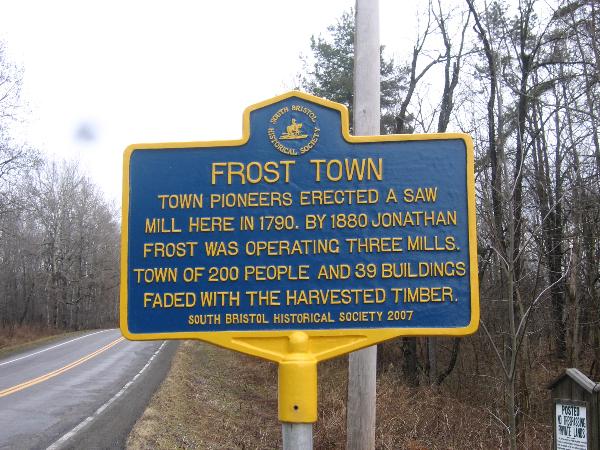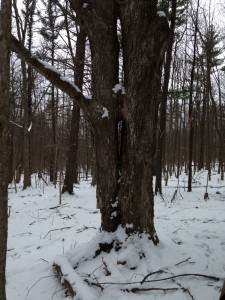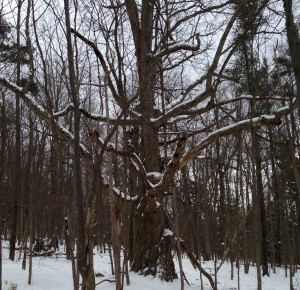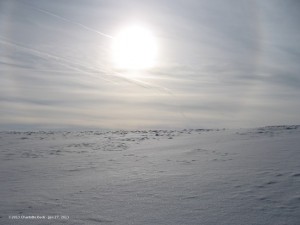The hemlock trees, Tsuga canadensis, in our forests, are threatened by an invasive insect, the hemlock wooly adelgid, Adelges tsugae. Many old hemlocks grow on steep slopes, where logging wasn’t practical. Loss of these trees would produce severe erosion of these hillsides, with many effects on ecosystems.  Migrating amphibians, already threatened by a fungus, would be threatened even more by losing the shelter and moisture they need. In New York, many thousands of hemlocks have already been killed, in the southeast part of the state. They have been found as far west as Yates County.
Migrating amphibians, already threatened by a fungus, would be threatened even more by losing the shelter and moisture they need. In New York, many thousands of hemlocks have already been killed, in the southeast part of the state. They have been found as far west as Yates County.
Springwater Trails hikers can help slow the spread of this killer by checking the hemlock trees we encounter, on our Sunday hikes, for the fluffy, white overwintering ovisacs on the leaves, from now, until the eggs hatch, usually around the end of April. On this information sheet you can see what hemlock trees look like and what we’re looking for on them, as well as items that look like them. Information sheets will also be passed out before the hike starts and ribbons to mark suspect trees. Photographs will also be helpful. The hemlock is one of the most common trees in this area and we’ve seen them on nearly every hike we do. There were many on the trail in Swain but, you’ll see why we can’t look for the ovisacs, when there’s snow on the trees. Most of our hikes are west of where they’ve been found so, hopefully, we’re not going to find them. If we do, Cornell Plantations will definitely want to know. If you see a suspicious tree, mark it with your ribbon, take a picture if you can, and let Gene or Georgia know. We will submit survey reports on every hike we take. In case you’re motivated to do more, you can check into training classes, offered by Cornell Plantations in Ithaca, this month, where you will see actual HWA infestations, and participate in surveys in some beautiful areas of Tompkins County, in April.
We will also be looking for other invasive tree killers, this summer. We will be presenting 2 programs for you to learn about them. April 9, at the Springwater Historical Society meeting at the Springwater Town Hall, and April 10, at the Adirondack Mountain Club meeting at the Rochester Science Museum.





